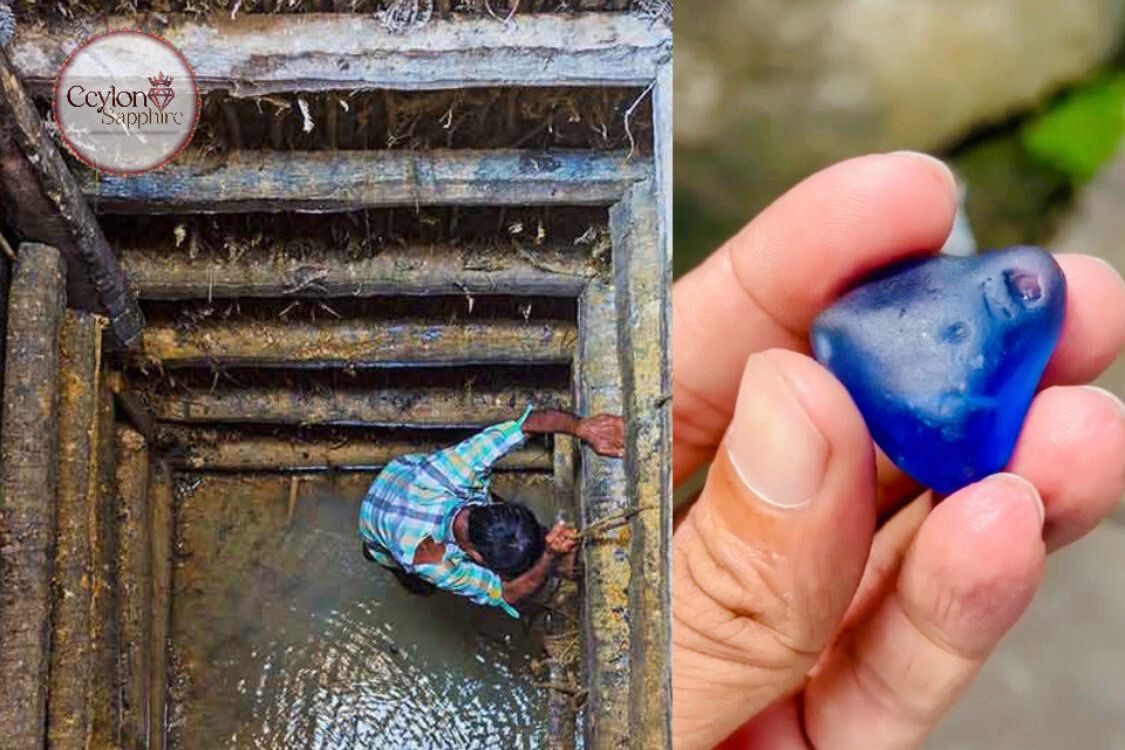
Ceylon, now known as Sri Lanka, has been a premier source of corundum gemstones, including sapphires and rubies, for over 2,500 years. The history of gemstone mining in Sri Lanka is rich and extensive.
There are two primary methods for mining sapphires in Sri Lanka:
1.River/Alluvial Mining: In this method, miners gather soil from riverbeds and river bends where heavier sapphire stones have settled. They then wash the soil using sieves to separate the sapphires from other materials. This process leverages the higher density of sapphires compared to other rocks.
2.Shaft and Tunnel Mining: This method involves digging vertical shafts that are 50 to 80 meters deep, followed by the creation of horizontal tunnels to reach primary deposits of sapphires underground. This is an artisanal mining approach, relying on manual labor without the use of heavy machinery.
Mining in Sri Lanka is carried out in a sustainable and small-scale manner, often involving multiple partners who share ownership of the mines. Miners typically work early in the morning to avoid the heat and humidity of the day.
The main regions for sapphire production in Sri Lanka are Ratnapura, also known as the "gem town," and the Elahera region. These areas are renowned for producing some of the highest quality Ceylon sapphires.
In conclusion, Sri Lanka employs both alluvial and shaft/tunnel mining methods to extract its globally celebrated sapphires. These methods take full advantage of the island's unique geological and geographical features, and the mining is conducted in a traditional, artisanal manner without the use of heavy machinery.
Ceylon sapphires are highly prized for several reasons:
Unique Color: Ceylon sapphires are famous for their exceptional blue hues, often with a hint of violet, which are more vivid and brighter than those from other locations.
High Clarity: These sapphires are known for their high clarity, which enhances their brilliance and visual appeal. They usually have minimal inclusions, making them standout gemstones.
Country of Origin: The term "Ceylon" refers to sapphires from Sri Lanka, a country with a rich heritage in precious stones and over 2,500 years of sapphire mining history.
6Cs of Sapphires: Ceylon sapphires are evaluated using the 6Cs framework: Colour, Clarity, Cut, Carat, Country, and Curing. This helps determine their value by considering their unique characteristics.
Variety and Abundance: Ceylon sapphires come in a wide range of colors, including blue, pink, yellow, green, and purple. They are also found in larger sizes compared to those from other regions, thanks to the abundance of these gemstones in Sri Lanka.
Durability: With a hardness of 9 on the Mohs scale, Ceylon sapphires are very durable and resistant to scratches, making them ideal for jewelry.
Padparadscha: Sri Lanka is also known for the rare Padparadscha sapphire, which has the unique color of the setting sun and the Sri Lankan lotus, making it a highly sought-after gemstone.
These factors combined make Ceylon sapphires highly valued and sought after in the gemstone market.